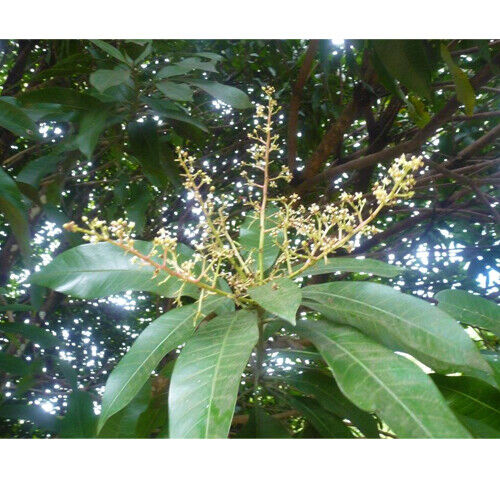Blog
Tinospora Cordifolia Stem Cuts : Unveiling the Ancient Herb’s Modern Story

I. Introduction: The Heart-Leaved Moonseed’s Enduring Legacy
Humanity’s enduring quest for natural healing has, for millennia, turned to the botanical world. Within this rich tapestry of traditional remedies, certain plants stand out for their profound historical significance and widespread use. Among these, Tinospora cordifolia, often more familiarly known as Giloy or Guduchi, holds a particularly revered position in Ayurveda, the ancient Indian system of medicine. Its legacy is not merely one of age, but of continuous relevance, prompting a fascinating interplay between ancient wisdom and contemporary scientific inquiry.
This report aims to provide a balanced and evidence-based exploration of Tinospora cordifolia. It will delve into the plant’s botanical identity, its myriad common names reflecting its cultural importance, and its extensive historical applications in traditional healing. Crucially, it will also present the vital insights gleaned from modern scientific research, examining the plant’s potential health benefits as well as the significant safety considerations that have emerged from recent studies. This comprehensive overview is designed to bridge the gap between historical reverence and current scientific understanding, offering readers a clear picture of this remarkable herb.
II. A Plant of Many Names and Faces: What is Tinospora Cordifolia?
Botanical Profile

Tinospora cordifolia is botanically classified as a herbaceous vine belonging to the Menispermaceae family, a group of plants predominantly native to South and Southeast Asia. This large, deciduous, and extensively spreading climbing vine is characterized by its numerous elongated, twining branches. Its most distinctive feature, and the origin of one of its common names, is its heart-shaped leaves, which can measure between 10–20 cm (4–8 in) long and 8–15 cm (3–6 in) wide, deeply cordate at the base. These leaves are simple, alternate, and attached by long petioles, giving the plant a unique appearance. The plant produces small, greenish-yellow, unisexual flowers on separate plants, typically appearing when the vine is leafless. Its fruits are equally striking: ovoid, smooth drupelets that aggregate in clusters, turning a vibrant scarlet or orange color upon ripening.
Tinospora cordifolia is remarkably adaptable, thriving in a wide variety of soil types, from acid to alkaline, and is commonly found climbing other trees and structures for support.
A Kaleidoscope of Names
The widespread geographical distribution and profound cultural integration of Tinospora cordifolia are reflected in the multitude of names it has acquired across different regions and languages. This extensive nomenclature signifies the plant’s deep historical presence and the empirical observations made by diverse communities over centuries.
| Category | Name(s) | Source |
| Scientific Name | Tinospora cordifolia (Miers) Hook. f. & Thomson | |
| English Names | Heart-leaved Moonseed, Giloe | |
| Hindi Names | Giloy, Guduchi | |
| Sanskrit Names | Guduchi, Amrita, Madhuparni, Chinnaruha, Vatsadaani, Tantrika, Kundalini, Amritavallari, Chakra Lakshanika, Somvalli, Rasayani, Jwarari, Bahuchinna | |
| Regional Names | Gurjo (Nepali), Gulancha (Bengali), Rasakinda (Sri Lanka) |
The Science Within: Phytochemical Profile
The potential therapeutic effects attributed to Tinospora cordifolia are rooted in its rich and diverse phytochemical composition. The plant contains a complex array of bioactive compounds, which are distributed throughout its various parts, including the stems, roots, and leaves. Key categories of these compounds include:
- Alkaloids: Such as berberine, tinosporin, palmatine, tembetarine, and choline, known for various biological activities including vasorelaxant and anti-inflammatory properties.
- Phytosterols: Including beta-sitosterol, which are compounds with a chemical structure similar to cholesterol.
- Glycosides: Compounds like tinosporide, cordifoliosides, and syringin, which have been linked to immunomodulation and anti-cancer properties.
- Diterpenoids: Including furano-diterpenoids, sesquiterpenoids, and phenolics. The presence of specific furano-diterpenoids is particularly noteworthy, as these compounds have been implicated in some of the plant’s adverse effects, a critical point that will be discussed later.
- Polysaccharides and Aliphatic compounds: These contribute to the plant’s overall biological activity.
Understanding this complex chemical profile is fundamental, as it provides the basis for the plant’s traditional applications and serves as the primary target for modern scientific investigation into how it might exert its effects, both beneficial and potentially harmful.
III. Rooted in Tradition: Ancient Uses and Ayurvedic Wisdom
A Pillar of Ayurveda
Tinospora cordifolia holds an exceptionally esteemed position within Ayurveda, an ancient Indian medical system that integrates natural products with lifestyle approaches to promote health and well-being. Its Sanskrit names encapsulate its profound significance: “Guduchi” translates to ‘that which protects the body from diseases’ , while “Amrita” refers to a ‘heavenly elixir’ or ‘immortal,’ symbolizing its perceived life-giving and rejuvenating properties.
In Ayurvedic texts like the Charak Samhita, Tinospora cordifolia is classified as a “Rasayana”. This designation is not merely a label but reflects a comprehensive therapeutic concept aimed at enhancing longevity, vitality, and overall health through rejuvenation and strengthening the body’s natural resistance. This holistic perspective, where a single herb is believed to influence multiple bodily systems, stands in notable contrast to the more reductionist approach often seen in modern medicine, which tends to isolate compounds and test for singular, specific effects. The deep reverence for
Tinospora cordifolia in traditional systems established a high expectation for its capabilities, which modern science is now rigorously evaluating.
Traditional Applications

For centuries, Tinospora cordifolia has been traditionally employed to address a remarkably broad spectrum of health conditions:
- Fevers: It was a primary remedy for chronic fevers, flu, and colds, and was even used for conditions like dengue and malaria, with traditional beliefs suggesting it could increase blood platelet count.
- Digestive Health: Traditional uses included managing dyspepsia, jaundice, urinary problems, chronic diarrhea, dysentery, constipation, acidity, gas, and bloating.
- Immunity & Inflammation: Revered as a potent immune modulator and bitter tonic, it was applied to alleviate symptoms of arthritis, gout, rheumatism, and general weakness.
- Skin & Hair: It found use in treating various skin diseases, allergies, improving complexion, and even addressing hair loss. Its anti-aging properties were also recognized, aiming to reduce fine lines and wrinkles.
- Other Uses: The plant was traditionally prescribed for diabetes, heart diseases, leprosy, helminthiasis, urinary tract infections, asthma, high cholesterol, depression, pain, and menstrual cycle difficulties.
Forms of Ancient Healing
In traditional practices, various parts of the Tinospora cordifolia plant were utilized, including its roots, stems, and leaves. A notable preparation was “Guduchi-satva,” a starch extract derived from the stem, prized for its digestive and nutritional benefits. Traditional preparations encompassed infusions, powders, juices, and pastes for topical application. It was also a common component in polyherbal formulations, reflecting a sophisticated understanding of synergistic botanical interactions. This long history of empirical observation, albeit uncontrolled by modern scientific standards, laid the groundwork for the contemporary investigations into the plant’s properties.
IV. Modern Insights: What Science Says About Tinospora Cordifolia
Promising Research Areas & Current Evidence
Modern scientific research has begun to explore Tinospora cordifolia‘s traditional claims, focusing on its phytochemicals and their biological activities. Several areas show promising results:
- Immune System Support & Allergies: Extensive research has investigated its immunomodulatory properties. Studies indicate it can enhance the activity of macrophages, immune cells responsible for engulfing foreign substances. It is frequently studied for its role in immunity and infectious diseases and has shown potential to significantly reduce symptoms of allergic rhinitis (hay fever). An 8-week clinical trial, for instance, reported improved hay fever symptoms with a daily intake of 300mg stem extract, three times a day. One study even suggested its anti-allergic potential might be comparable to Spirulina.
- Diabetes Management: Preliminary evidence points towards benefits for individuals with type 2 diabetes. Oral administration of Tinospora cordifolia appears to improve blood sugar levels in adults with type 2 diabetes. A clinical trial on type 2 diabetic patients observed significant reductions in fasting blood sugar, total cholesterol, and triglycerides after treatment. While preclinical studies suggest it may reduce the body’s absorption of sugar-derived carbohydrates and potentially mitigate diabetes-related pathologies like retinopathy and nephropathy, robust human evidence for these specific effects is currently limited. This aligns with its traditional Ayurvedic name, “Madhunashini” (destroyer of sugar).
- Anti-inflammatory and Antioxidant Effects: The plant contains chemical compounds exhibiting antioxidant and anti-inflammatory properties. Its anti-inflammatory capabilities are being investigated for conditions characterized by inflammation, such as arthritis.
Understanding the Evidence: Preclinical vs. Clinical
It is crucial to differentiate between the types of scientific evidence supporting Tinospora cordifolia‘s purported effects. While numerous preclinical studies (conducted in cell cultures or animal models) have explored a wide array of potential benefits—including anti-cancer, hepatoprotective, antiviral, and neuroprotective activities—there exists a notable gap between these findings and robust human clinical evidence. Many traditional claims, despite their long history, still lack strong scientific validation from rigorous human clinical trials. For instance, while preclinical studies suggest improved cognitive functions, human studies to confirm these effects are currently absent. This distinction is vital for a clear understanding of the plant’s scientifically supported applications.
Table 2: Traditional Uses vs. Current Scientific Evidence of Tinospora cordifolia
| Condition/Area | Traditional Claim (Ayurveda) | Current Scientific Evidence (Human Clinical & Preclinical) |
| Immune Support | Highly revered immunomodulator, boosts immunity, fights disease | Improves macrophage activity; promising for allergic rhinitis (hay fever) with some human clinical support |
| Diabetes Management | “Madhunashini” (destroyer of sugar); used for diabetes | “Possibly effective” for improving blood sugar in Type 2 diabetes (human clinical evidence); preclinical suggests reduced sugar absorption, but human evidence for this is lacking |
| Anti-inflammatory | Used for arthritis, gout, rheumatism | Contains anti-inflammatory compounds (preclinical and chemical analysis); traditional applications in managing inflammation are explored |
| Cognition/Memory | “Medhya Rasayana” (brain tonic, memory enhancer) | Preclinical studies show potential improvement in cognitive functions, but no human studies have confirmed these findings |
| Liver Support | Traditionally purported as hepatoprotective (liver protective) | CONTRADICTED: Highest reported cause of herb-induced liver injury (HILI) in India; toxicity linked to plant compounds |
| General Health/Vitality | “Amrita,” “Rasayana” (heavenly elixir, rejuvenator) | Contains antioxidants, adaptogenic properties (preclinical/some human studies); many other traditional uses lack sufficient human clinical evidence |
The Adaptogenic Edge

Tinospora cordifolia Stem Roots Powder Giloy Gudichi Heart Leaved Mooseed Stem
Serving Size: 10g
Beyond specific disease applications, Tinospora cordifolia is recognized in traditional medicine as an “adaptogen” or “rejuvenator”. An adaptogen is a natural substance believed to help the body adapt to various stressors and restore overall physiological balance. Recent animal and some human studies lend support to its potential anti-stress properties, indicating benefits in managing depression and improving cognitive functions such as concentration and memory. This adaptogenic quality contributes to the plant’s traditional reputation as a general tonic for vitality and well-being.
V. Important Considerations: Safety and Potential Risks
Despite its long history of traditional use and promising research areas, Tinospora cordifolia carries significant safety concerns that consumers must be aware of. The common misconception that “natural” equates to “safe” is particularly dangerous in this context.
The Liver Concern: A Critical Warning
Perhaps the most critical safety issue associated with Tinospora cordifolia is its documented link to herb-induced liver injury (HILI). Alarmingly, it has been identified as the “highest reported causative agent of herb-induced liver injury in India”. While some proponents of Ayurvedic medicine have attempted to attribute these effects to adulteration of products, investigations have demonstrated that the toxicity can result directly from compounds inherent in the plant itself, such as furano-diterpenoids. The severity of this adverse effect is profound, with reported cases leading to the need for liver transplants or even fatalities from cirrhosis.
A concerning trend emerged during the 2020-2022 COVID-19 pandemic in India. The Ministry of AYUSH recommended Tinospora cordifolia (giloy) as a home remedy for immune support, which subsequently fueled a significant surge in its usage. This increase in consumption coincided with a rise in reported cases of acute liver injury, with more than 50 cases appearing since 2017. One study analyzing 43 patients with liver toxicity found that
Tinospora cordifolia was “probably” or “possibly” the cause in all cases, indicating a direct causal relationship between the herb’s compounds and liver damage. Furthermore, some supplement formulations have been found to be contaminated with higher-than-allowed levels of heavy metals, including mercury, arsenic, and lead, adding another layer of risk to unregulated products. This situation highlights the critical need for scientific validation and regulatory oversight, as unchecked promotion of herbal remedies, even those with ancient roots, can lead to widespread adverse events.
Navigating Interactions with Medications

Organic Heart Leaved Mooseed Tinospora cordifolia Stem Roots Cuts Giloy Gudichi
Benefits of Heart Leaved Mooseed
Tinospora cordifolia can interact with various pharmaceutical medications, potentially leading to adverse health outcomes:
- Diabetes Medications (Antidiabetes drugs): As Tinospora cordifolia may lower blood sugar levels, taking it concurrently with diabetes medications (such as glimepiride, glyburide, insulin, pioglitazone, rosiglitazone, or glipizide) could cause blood sugar to drop dangerously low, leading to hypoglycemia. Close monitoring of blood sugar is essential.
- Immunosuppressants: The plant is known to increase immune system activity. This effect could counteract the actions of immunosuppressant medications, which are prescribed to decrease immune function (e.g., for organ transplant recipients or individuals with autoimmune conditions).
- Medications Changed by the Liver (Cytochrome P450 substrates): Tinospora cordifolia might influence the rate at which the liver metabolizes certain medications. This could alter the effectiveness or side effect profile of drugs that are broken down by liver enzymes, such as those that are substrates of CYP1A2, CYP2C19, CYP2C9, and CYP2D6.
Special Precautions
Certain individuals should exercise extreme caution or avoid Tinospora cordifolia altogether:
- Autoimmune Diseases: Individuals with autoimmune conditions like multiple sclerosis (MS), systemic lupus erythematosus (SLE), or rheumatoid arthritis (RA) should avoid Tinospora cordifolia. Its potential to increase immune system activity could exacerbate symptoms of these conditions.
- Surgery: Due to its potential to affect blood sugar levels, it is recommended to discontinue Tinospora cordifolia at least two weeks prior to any scheduled surgical procedure.
- Pregnancy and Children: The safety of Tinospora cordifolia during pregnancy and for children has not been reliably established. Pregnant women should only use it under strict medical supervision, and for children, it should only be administered if specifically recommended by a qualified Ayurvedic practitioner.
- General Side Effects: Other reported side effects from Tinospora cordifolia stem extract include headache and nasal pain when taken orally. Topical application may cause burning, itching, and redness. Constipation has also been noted as a possible side effect.
Table 3: Key Safety Warnings and Drug Interactions for Tinospora cordifolia
| Risk/Concern | Explanation | Specific Conditions/Medications Affected |
| Liver Injury (HILI) | Highest reported cause of herb-induced liver injury in India; can lead to liver transplant or death from cirrhosis. Toxicity results directly from plant compounds (e.g., furano-diterpenoids), not just adulteration. Cases surged during COVID-19 pandemic. | General use, especially unregulated or high doses. |
| Drug Interactions | ||
| Diabetes Medications | May lower blood sugar levels excessively, causing hypoglycemia. | Glimepiride, glyburide, insulin, pioglitazone, rosiglitazone, glipizide, metformin. |
| Immunosuppressants | May increase immune system activity, reducing the effectiveness of these drugs. | Cyclosporine, azathioprine, basiliximab, corticosteroids, prednisone, tacrolimus, sirolimus. |
| Liver-Metabolized Drugs (CYP450) | May alter how quickly the liver breaks down certain medications, affecting their efficacy or side effects. | Medications metabolized by CYP1A2, CYP2C19, CYP2C9, CYP2D6. |
| Special Precautions | ||
| Autoimmune Diseases | May increase immune system activity, potentially worsening symptoms. | Multiple sclerosis (MS), lupus (SLE), rheumatoid arthritis (RA). |
| Surgery | May affect blood sugar control during and after surgery. | Stop at least 2 weeks before scheduled surgery. |
| Pregnancy/Children | Safety not established; potential risks. | Pregnant/breastfeeding women, children. |
| Common Side Effects | Headache, nasal pain (oral stem extract); burning, itching, redness (topical); constipation. | General use. |
Export to Sheets
The Call for Professional Guidance
Given these significant safety considerations, it is paramount that individuals consult a qualified healthcare professional before initiating any Tinospora cordifolia supplement. This is especially crucial for those with pre-existing health conditions, those taking other medications, or those considering its use for specific therapeutic purposes. It is important to remember that natural products are potent substances, not always inherently safe, and appropriate dosages can be critical for both efficacy and safety. Furthermore,
Tinospora cordifolia is not approved by the Federal Drug Administration (FDA) , underscoring the need for informed and cautious use guided by medical expertise.
VI. Conclusion: Navigating the Path Forward
Tinospora cordifolia, the heart-leaved moonseed, presents a fascinating study in the evolving relationship between traditional botanical wisdom and modern scientific inquiry. It stands as a revered herb with deep roots in Ayurvedic medicine, celebrated for centuries as a “Rasayana” and “Amrita,” believed to promote longevity, vitality, and overall well-being. Its traditional applications are vast, spanning from fever management and digestive support to immune modulation and anti-inflammatory effects.
However, the journey from traditional use to scientific validation reveals a complex landscape. While modern research has indeed uncovered promising avenues, particularly in its potential for immune system support, allergic rhinitis relief, and diabetes management, it is critical to acknowledge the significant gap that often exists between preclinical findings and robust human clinical evidence. This distinction is vital for a clear understanding of what is scientifically supported.
Most importantly, recent scientific findings have brought to light serious safety concerns, most notably its identification as a leading cause of herb-induced liver injury in India. This direct contradiction to its traditional reputation as a liver-protective agent underscores the dynamic nature of scientific understanding and the potential perils of unregulated herbal consumption. Furthermore, its interactions with common medications and specific contraindications for certain health conditions necessitate a cautious approach.
Ultimately, Tinospora cordifolia embodies the dual nature of many traditional remedies: a source of historical healing and a subject of ongoing scientific investigation. While its potential health benefits continue to be explored, its use must be approached with informed caution. For anyone considering Tinospora cordifolia supplementation, consultation with a healthcare professional is not merely advisable but essential. This ensures that its potential benefits can be pursued responsibly, prioritizing individual safety and well-being based on the most current scientific understanding. The continued research into this remarkable plant will undoubtedly refine our understanding, guiding its future role in holistic health with greater precision and safety.

Discover more from Nath Mart
Subscribe to get the latest posts sent to your email.







